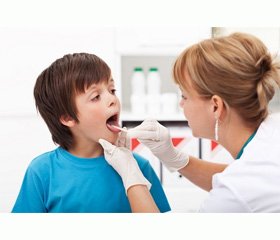Журнал «Здоровье ребенка» 3 (54) 2014
Вернуться к номеру
Modern approaches to the diagnosis of rotavirus infection in children
Авторы: І.I. Nezgoda, O. M. Naumenko, A. Book, V. I. Knyzeva - Vinnitsa National Medical University Pirogov
Рубрики: Педиатрия/Неонатология
Разделы: Клинические исследования
Версия для печати
Introduction. Acute intestinal infections are one of the most important health issues, despite the progress achieved in improving the diagnosis and treatment strategy.
In recent years, a clear trend is observed in the changing aetiological significance of pathogens that cause аcute intestinal infections in children. No doubt the fact that the leading role among them in the world now belongs to viruses which cause 50-80 % of аcute intestinal infections in children.
Background viral аcute intestinal infections due to their prevalence, high morbidity and considerable social and economic costs.
The main etiological agents in children are acute intestinal cavity viruses. Rotavirus infection is the most common cause of severe dehydrating diarrhea.
Modern feature of the course of rotavirus infection in children is to combine it with other infections by type konfektsiyi and superinfection. According Konnov OA , the proportion of co- infections caused by rotavirus combination with other agents (mainly viral ) increases. Thus , in 2010, rotavirus mixed infection detected in 18.8 % of cases, and in 2011 they accounted for 26.6 %.
Thus, the problem of viral diarrhea , especially rotavirus infection ( as mono- and associated forms) is relevant.
The aim of our study was to examine the role asotsiantiv the structure of rotavirus infection in children using modern diagnostic methods.
Materials and methods. The study was conducted at the Regional Clinical Pediatric Infectious Diseases Hospital in the winery at the Department of Pediatric Infectious Diseases Vinnitsa National Medical University Pirogov by name . During the period from December 2012 through March 2013 were under the supervision of 123 patients aged 3 months to 5 years with a diagnosis of acute intestinal infections.
The study included 86 children with rotavirus infection aged 3 months to 5 years (24,4 ± 1,6 months). The criterion for inclusion in the study had a positive rotavirus-test which is based immunoassay. The study involved 45 boys and 41 girl , representing 52.4 % and 47.6 %, respectively.
Complex survey included general clinical research methods, indication rota- , noro -, astro -, adenovirus , Clostridium difficille tox A / B and Clostridium difficille GDH with the help of ELISA , bacteriological examination of stool for the presence of Salmonella, Shigella, E. coli and pathogenic microorganisms (Klebsiella spp., Proteus spp., Enterobacter, Citrobacter spp.).
Results. During the research found that rotavirus monoinfection occurred in 32 patients (37.5 %) and in 62.5 % of cases it ran as associated forms. As asotsiantiv acted as viruses and bacteria.
Among asotsiantiv most common viral and noroviruses astrovirusy , representing 2.3 % and 3.5 % respectively. None of the surveyed our child in stool samples was found adenoviruses. In conducting the bacteriological research found that 32 (37.1 %) patients with intestinal allocated except rotavirus and opportunistic bacteria that took place mixed infection as a combination virus + bacteria .
Among bacteria prevailed S. aureus (37,3 %), Citrobacter freundi (21,6 %), Proteus vulgaris (14,2 %), Enterobacter cloacae (11,8 %), Citrobacter intermedius (11,8 %), Enterobacter aerogenes ( 7 9 %), Citrobacter divers (5,5 %) and others.
Our data show that in 19.6 % of patients with Clostridium difficille acts as asotsianta with rotavirus infection in children , and in 3 patients was highlighted with the presence of Clostridium difficille toxin A and B , and 9 children in stool samples was present enzyme hlutamatdehidrohenaza .
A feature of this mixed version is that this association occurs mainly in young children (18 months ± 1,2 months). Another feature of the association rotavirus + Clostridium difficille is the fact that this mixed infection in children is more difficult course of the underlying disease and requires long-term hospital care.
Conclusions.
1. To date, the etiological structure of acute intestinal viruses predominate , their share is 60-90 % of all verified intestinal infections , the most common among them is the rotavirus infection .
2. Modern feature of rotavirus infection in children, is of course in the form of associated forms in 62.5 % of patients and in 37.5% of registered monoinfection .
3. Among asotsiantiv viral and noroviruses are found astrovirusy , representing 2.3 % and 3.5 % respectively. As bacterial agents often act : S.aureus (37,3 %), Citr.freundi (21,6 %), Pr.vulgaris (14,2 %).
4. Of particular note is a microorganism as Clostridium difficille, which occurs in a significant number of patients with rotavirus infection (19.6 %) , most often occurs in children with severe medical conditions that require long-term hospital care.
5. Diagnosis of rotavirus infection at this stage requires the use of new diagnostic methods , namely, immunoassay , enzyme immunoassay and polymerase chain reaction.

